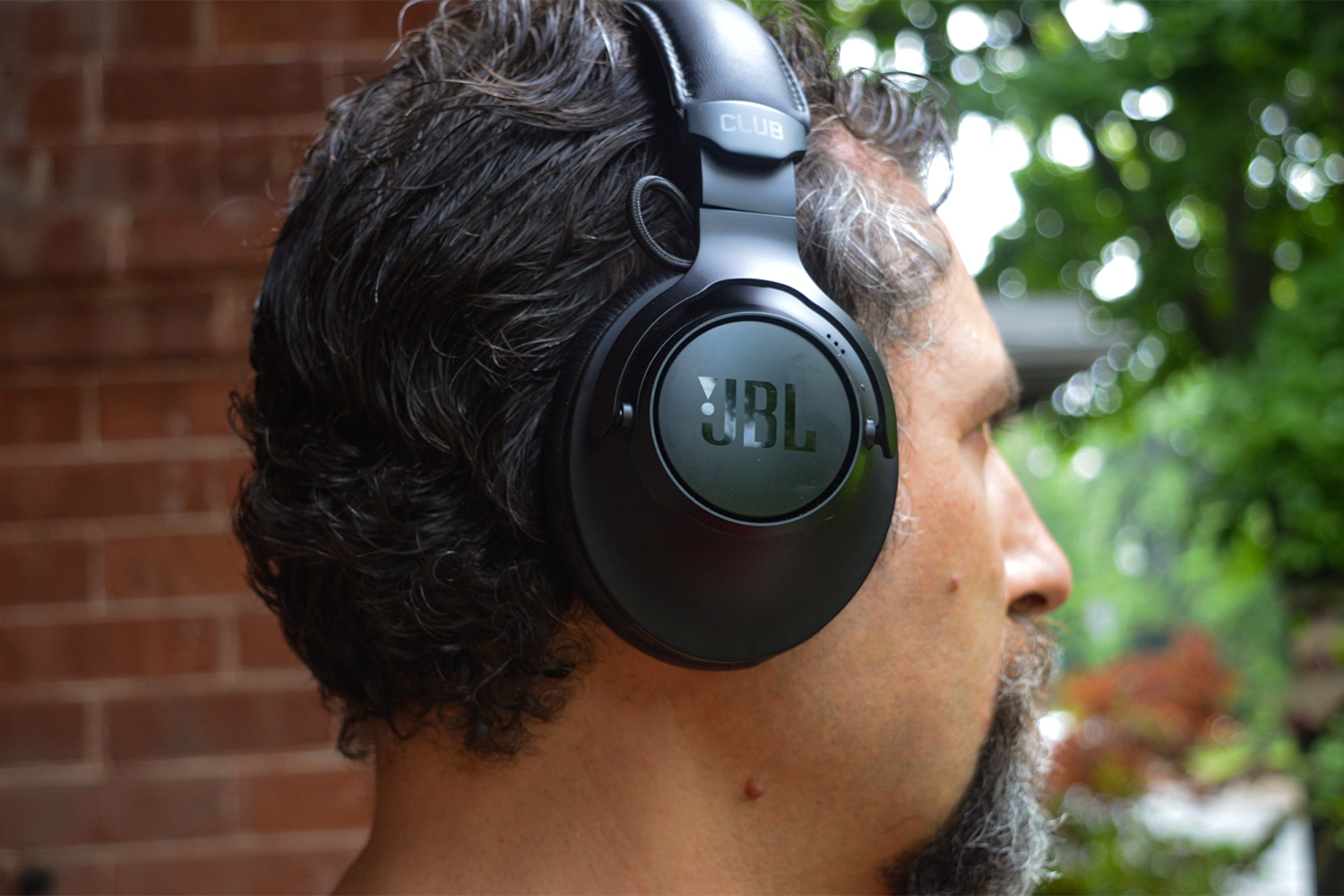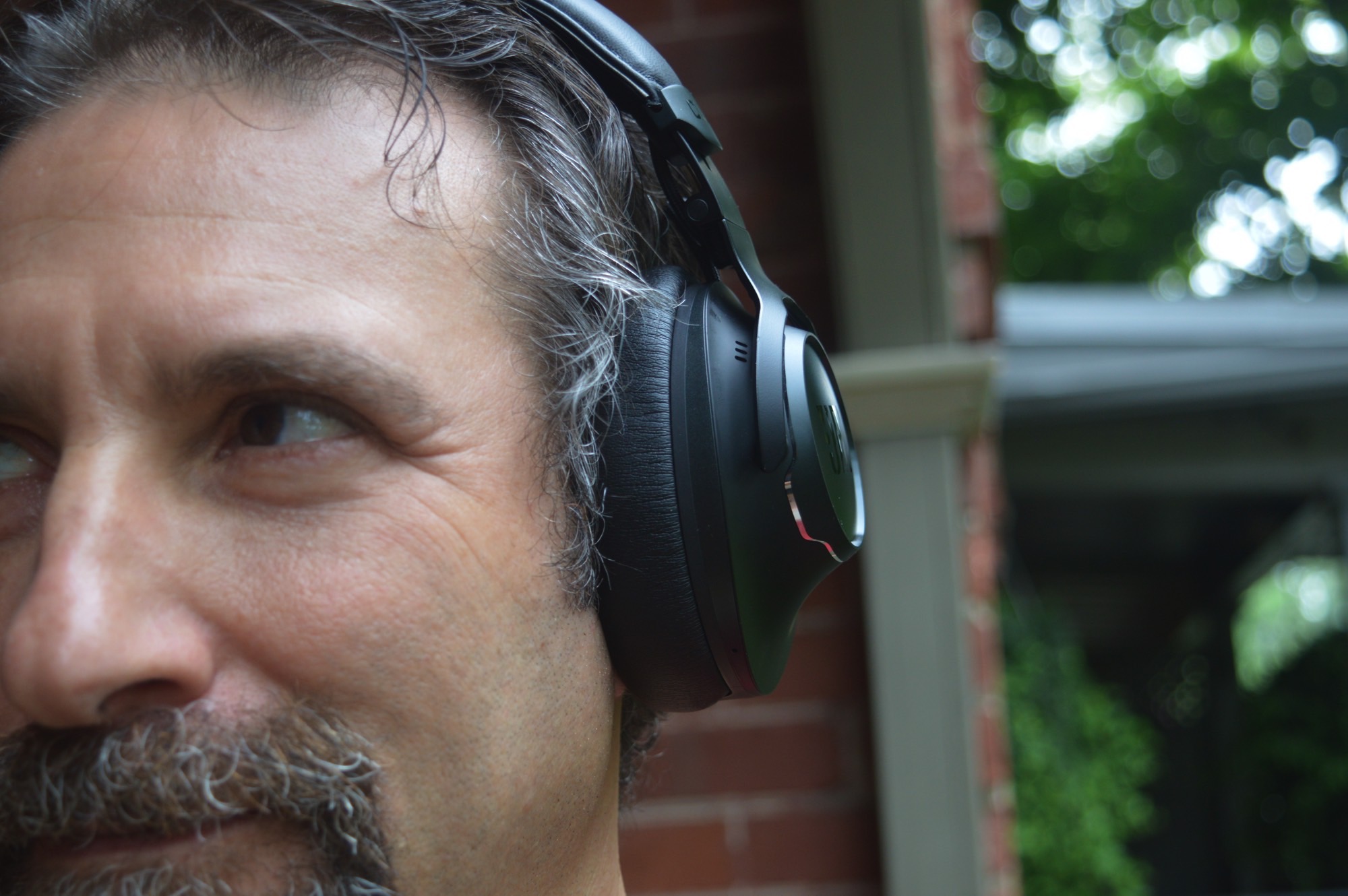
“Built for those who love the club sound, they're a bit pricey for what you get”
- Powerful, precise sound
- Excellent build quality
- Easy-to-use controls
- Very good call quality
- Excellent non-ANC battery life
- Heavy
- Lacks low-end depth and warmth
- Earcups may not seal for all users
- Only one ANC mode available at a time
The ranks of top-tier over-ear headphones with active noise cancellation (ANC) are already home to an impressive number of contenders, like the $400 Bose Noise Cancelling 700 Headphones, $350 Sony WH-1000XM3, $400 Bowers & Wilkins PX7, and Sennheiser’s $400 Momentum 3 Wireless.
But there’s always room for one more and JBL hopes its new $350 Club One will earn themselves a place at the table. Do they succeed? Check out our full review.
Design and materials

Pick up the JBL Club One and you know right away that JBL isn’t messing around. Everything about these headphones says premium. Quality cues are everywhere, from the heavy-gauge metal sliders, hinges, and earcup pivots, to the deeply-cushioned (and magnetically attached) earpads, and the full leather headband.
Despite how heavy they are, once you put them on your head they are remarkably well balanced.
That build quality does come at the price of weight: The Club Ones tip the scales at a hefty 13.3 ounces. To put that in perspective, the PX7 weigh 10.7 ounces and the WH-1000XM3 weigh just a scant 8.9 ounces.
Amazingly, despite how heavy they are, once you put them on your head they are remarkably well balanced. The combination of headband padding and clamping pressure helps the Club Ones feel lighter than their numbers suggest.
The comfy, firm fit might not be to everyone’s liking, however. With earcups that have smaller openings than some of the competition, those with large ears may feel a tad claustrophobic. I noticed the earcup pivots also struggled to keep the pads flush with the sides of my head and often left a small gap near the bottom.
Overall, the Club One’s design is reminiscent of a high-end luxury coupe, with understated matte finishes and just a hint of chrome trim encircling the outer surface of the earcups. I’m not quite sure what to make of the exposed braided audio cables. Depending on your point of view, they add a touch of retro cool, or they interrupt what is otherwise a clean and simple design.
The Club One
Controls and usability

As their name suggests, the Club One
This restriction also means that when resting around your neck, the earcups don’t lie flat. It’s not a deal-breaker, but if you’ve ever worn full-size
For the most part, the Club One’s controls are very familiar: Play/pause and volume are integrated into an easy-to-find and use three-way controller on the right earcup, while power, Bluetooth, and ANC buttons are equally accessible on the left. One surprise is the oversized “action” button that takes up the whole outer surface of the left can. It’s used for summoning your choice of Google Assistant or Alexa, though oddly, not Siri.
I love the massive physical button, but it sure would be nice to be able to swap the function from voice assistant to say, ANC mode, as that’s a feature I found myself using more often.
Another surprise is the dual set of inputs for the set of analog cables that come with the Club Ones. Unlike virtually all
Sound quality

The Club Ones sound great, but just not in the way I was expecting. To me, “DJ-inspired” suggests a bass-forward signature to reflect the throbbing beat of the club floor, but the EQ is actually far milder than that. Instead of a deep boom, the Club Ones veer toward the energetic mids and highs — the elements that punctuate an EDM track through the build, right before the beat drops.
The result is a sound that produces crystal clear and precise upper registers — almost achingly so — which really complement the EDM genre.
They don’t convey warmth or expansiveness as well as some of the other
I guess this shouldn’t come as a surprise. Within the JBL

If there’s a downside to the Club One’s sound, it’s that they don’t convey the warmth or expansiveness of a soundstage as well as some of the other
Sony’s excellent WH-1000XM3 can’t compete with Club Ones in terms of pure energy, but they do a better job of letting low-end bass resonate through your whole body. If the Sonys are the Black Eyed Peas’ Boom Boom Pow, then the JBLs are David Guetta’s Titanium.
In an ideal world, all
Some folks are very picky about Bluetooth audio codecs. If that sounds like you, you should know that despite the Club One’s high-end price, it only supports SBC and AAC Bluetooth connections — not aptX, aptX HD, or LDAC. If you want a higher level of quality, you’ll need to use either your phone’s digital-t0-analog converter (DAC) or your own DAC plus one of the included analog cables. JBL claims that when used with these cables, the Club One’s frequency response jumps into hi-res audio territory.
Leveraging Tidal’s HiFi Masters catalog, I put the Club Ones to the hi-res test. There’s no doubt: They sounded even better with this source, but their decidedly punchy EQ remained something that I felt did not do justice to genres like jazz, classical, and blues.
Noise-canceling

You’ve got to try pretty damn hard to beat the likes of Sony and Bose at the ANC game, and though the Club Ones give it their best — they eliminate a lot of external sounds — it’s not their killer feature.
Part of the problem is the design of the
It’s not a big gap, though. I’d say the Club Ones are about 85% as effective as the Sonys, but it’s something to keep in mind if ANC is a big item on your headphone wish list.
I also found myself confused by the Club One’s ANC-related features. The ANC button actually has two modes: Ambient Aware, which lets you switch between full ANC and the ability to let some outside sounds in, and TalkThru which switches you between full ANC and a reduced-volume level so it’s easier to have a conversation. For some reason, you can only use Ambient Aware or TalkThru, not both. You use the
The Club Ones also lack any kind of adjustment for ANC intensity, unlike the Sonys with their app-adjustable ANC and Microsoft Surface
There is a clever “Silent Now” feature that lets you engage ANC without fully powering up the Club Ones and wasting battery on Bluetooth or amplification. This is something that more ANC
Battery life
JBL claims 45 hours of playback time for the Club Ones without the use of ANC, which is very good. However, that number falls to just 23 hours with ANC on. They’re certainly better than some
Still, at under two hours to get back to a full charge, they’ve got a faster turnaround time than the Sonys between uses.
Call quality

Overall, JBL has a winner here for making calls in loud environments.
In my experience,
The flip side is that my voice apparently did that wibbly-wobbly thing that I’ve started to associate with strong noise-canceling microphones.
Overall, JBL has a winner here for making calls in loud environments.
Our take
At $350, JBL has priced the Club One
Is there a better alternative?
For the same price (and sometimes as low as $280) the Sony WH-1000XM3 offer lighter weight, better ANC performance, and longer battery life with ANC on. We think their sound signature will appeal to a wider audience. There’s a reason they’re still our number one pick.
How long will they last?
The JBL Club One
Should you buy them?
Yes — if your preferences in sound quality are a match for the Club One’s strengths, i.e. power and precision with an emphasis on the higher registers, for an energetic audio experience, and you don’t mind the extra bulk, these



